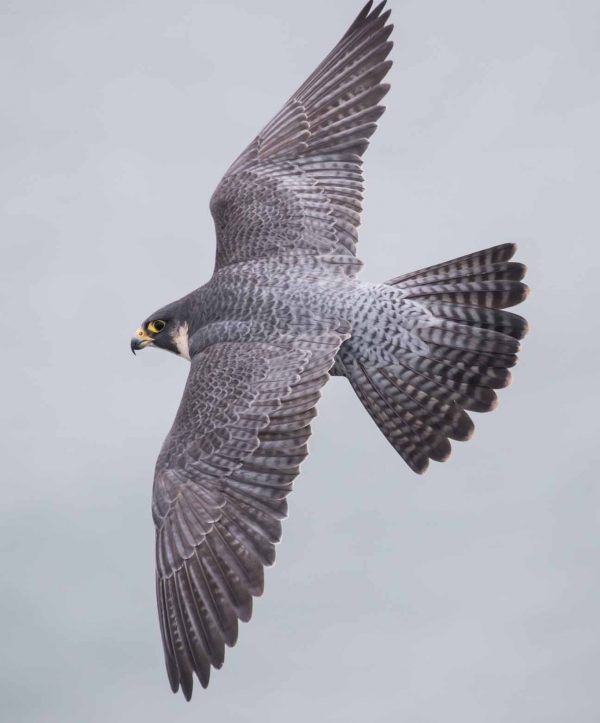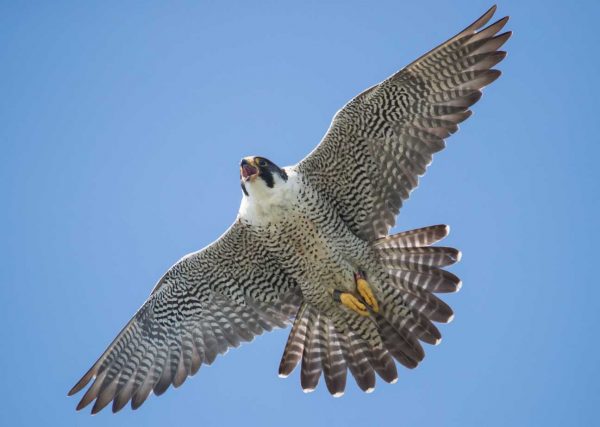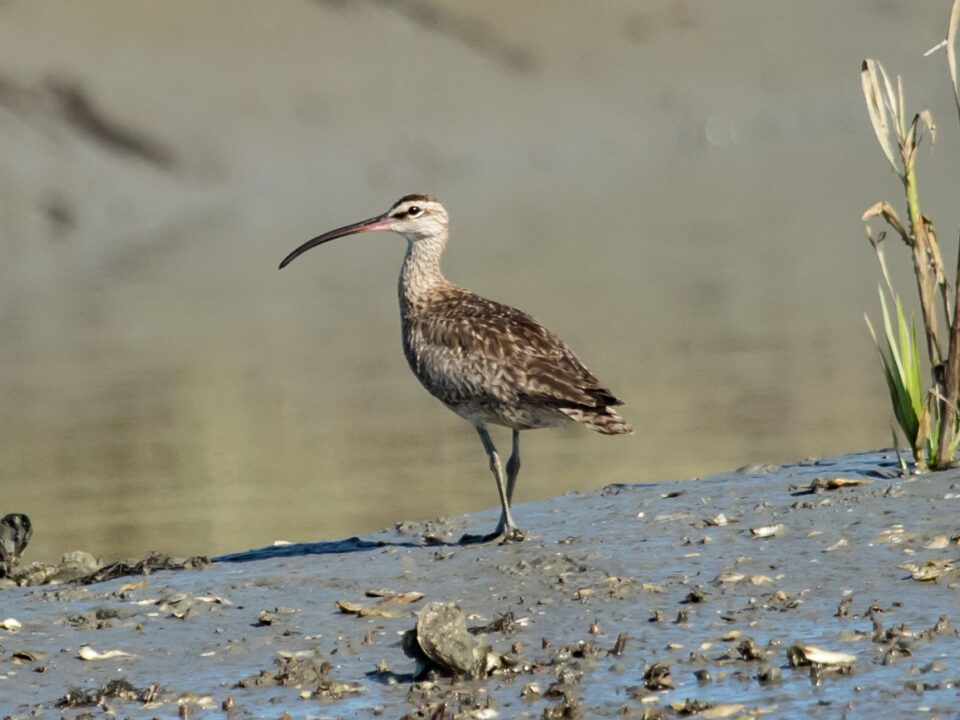Female peregrines under pressure

Losing ground to sea-level rise
September 26, 2018
A heron’s tale
October 3, 2018By Bryan Watts | bdwatt@wm.edu | (757) 221-2247
October 2, 2018
The 2018 breeding season was a rebuilding year for peregrine falcons in Virginia. Of 39 slots within established territories where breeding adults could be identified in both 2017 and 2018, 23% of individuals had changed between years. Although this annual turnover rate is one of the highest that we have recorded since initiating intensive identification efforts, the more interesting aspect is that males and females had markedly different rates. Only 10.5% of males were lost compared to 35.0% of females. This disparity between the sexes, although extreme in 2018, continues an ongoing trend and is opposite of the pattern of survival documented within the peregrine population breeding within the Midwest.

Last photo of the female that nested on the James River Bridge for a decade. She was lost in February in the run up to the 2018 breeding season. Photo by Bryan Watts.
Peregrine falcons are dimorphic in size with females in many populations weighing 40% or more than males. In addition to size differences, the genders have different roles during the breeding season with the female performing most of the brood rearing and the male responsible for much of the hunting. Both sexes will defend the eyrie from intruders.

The female from Yorktown Power Station was lost before the 2018 breeding season and was replaced by a female that was two years younger. Photo by Libby Mojica.
Although we have documented some mortality factors (car strikes, collisions, West Nile Virus, etc.) operating within the population, much of the annual losses remain a mystery and none suggest a gender bias. We have rarely documented adult losses during the breeding season after egg-laying. Most of the mortality we document is occurring before egg-laying and as with most peregrine populations, competition and fighting for prominent territories is intense. It seems likely that a significant portion of the annual mortality may result from contest fights, but why this activity would exert greater pressure on females is unclear.





